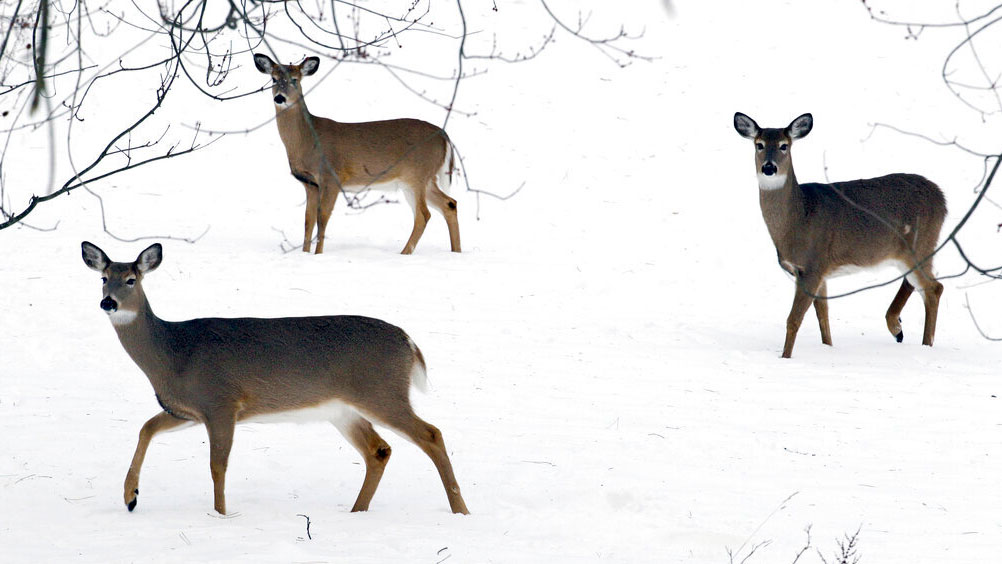Could deer become a reservoir for COVID-19?

Deer forage through a blanket of snow in Lancaster, N.Y., Saturday, Jan. 5, 2013. The highly infectious COVID-19 omicron variant was detected in the white-tailed deer population on New York's Staten Island, according to a study by a Penn State research team. AP Photo/David Duprey, File
Since the beginning of the pandemic, researchers have known that white-tailed deer could be infected with COVID-19. According to research from the US Department of Agriculture, 40% of deer across parts of the Midwest and Northeast are testing positive for COVID-19 antibodies. The deer dwell in both urban backyards and rural homesteads, they travel quickly, and they’re essentially everywhere in the country. As a species, they’re pretty far from being contained or containable. Though there is no evidence for it yet, it’s possible that the virus, using deer as a reservoir, could be transmitted from deer back to humans.
To talk about the research and the potential future implications, we were joined by an associate professor of epidemiology and Illinois' state biologist.
GUESTS:
Becky Smith, DVM MS PhD
Associate Professor of Epidemiology in the Department of Pathobiology at the College of Veterinary Medicine, Health Innovation Professor at Carle-Illinois College of Medicine
Eric Schauber, PhD
Principal Research Scientist, Illinois State Biologist, and Director at the Illinois Natural History Survey, part of the Prairie Research Institute at the University of Illinois at Urbana-Champaign
Prepared for web by Owen Henderson
Help shape our coverage on The 21st by joining our texting group and answering weekly questions. To join, text “TALK” to 217-803-0730 or sign up with your phone number below:

